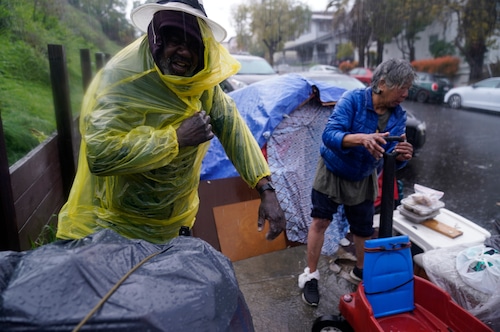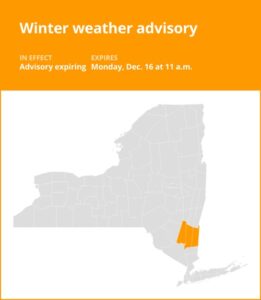An increasing number of elderly and homeless people are freezing to death every winter.
According to preliminary death certificate statistics from the U.S. Centers for Disease Control and Prevention, hypothermia from exposure to freezing temperatures was the underlying or contributing cause of death for 166 Californians last year, more than twice as many as ten years before. In 2023, the state experienced its highest age-adjusted death rate in at least 25 years, with 3.7 fatalities per million population.
According to preliminary CDC data, the number of Americans who died from hypothermia jumped by almost 35% from 2014 to 2,520 last year. In 2022, it was even worse: 3,500 people died from hypothermia, many of them during severe winter storms that hit much of the nation in January and December.
According to specialists, the surge in hypothermia mortality is associated with homelessness, particularly in California, which has the highest number of homeless people in the country.
Because so many elderly, fragile adults live outside, where they are exposed to the weather, homeless people are especially prone to hypothermia. Advocates argue that more permanent housing and more programs that prevent homelessness are required, but government authorities have mostly responded to hypothermia deaths by building warming centers where homeless individuals can stay on chilly nights.
Leon Winch, who is sitting on a park bench close to the state Capitol, stated that as winter draws near, he finds it difficult to stay warm. He looks for locations to stay dry on chilly, wet evenings, but private security officers frequently monitor covered areas, so he is chased away. Although hypothermia can happen at greater temperatures, particularly in the event of rain, it usually happens at temperatures below 40 degrees.
Under specific circumstances, such as when nighttime temperatures are predicted to drop below 37 degrees for two or more days in a five-day span, city officials establish facilities. However, Winch stated that despite the freezing conditions, he does not trust the city of Sacramento and does not use its warming centers.
According to him, they are merely window-dressing.
From 2019 to 2023, 18% of hospitalizations and ER visits for hypothermia were among the homeless, according to the California Department of Health Care Access and Information. Nearly 0.5% of Californians are homeless, meaning they have a roughly 40-fold higher risk of hospitalization for hypothermia than the general population.
More than two-thirds of the 181,000 homeless people in the state are not receiving shelter, according to federal data. Additionally, one group has been disproportionately affected by hypothermia-related deaths.
According to CDC data, over three-quarters of hypothermia deaths in California between 2021 and 2023 occurred in those aged 55 and above, indicating that older folks are more vulnerable to the condition.
According to Margot Kushel, head of the University of California-San Francisco Benioff Homelessness and Housing Initiative, the number of elderly homeless people has significantly increased. According to her, the percentage of homeless adults in California who are 50 years of age or older and are unmarried has risen from 11% in 1990 to almost 50% today.
Additionally, the number of deaths in the state from exposure to heat throughout the summer has increased in tandem with the number of deaths from exposure to cold. People are getting sicker more quickly because they are older and cannot handle the increased temperature extremes, drenching rains, and changing climate, according to Kushel.
The pattern might get worse: According to UCSF researchers, the percentage of the US population 65 and older without a home is expected to quadruple between 2017 and 2030.
Although the majority of deaths from hypothermia occur in metropolitan areas, the state of California has the highest prevalence in its rural, mountainous, northern regions.
From 2021 to 2023, hypothermia was the leading cause of death for 46 people in Los Angeles County, the most in the state. However, because of the county’s high population, the death rate was lower than the statewide average.
Among the most populated counties in the state, Santa Clara, San Francisco, and Sacramento had the greatest incidence of hypothermia-related deaths. According to CDC data, hypothermia was the underlying cause or a contributing factor in 42 deaths in Santa Clara County between 2021 and 2023, up from 11 over the preceding three years.
Santa Clara County homeless advocate Shaunn Cartwright remarked, “Every year we are worse than last year.”
According to Cartwright, local authorities are not giving homeless individuals enough permanent shelter beds, much less enough temporary shelter beds for chilly evenings. Kushel claimed that the issue is widespread throughout the state.
In an emailed statement, Michelle Jorden, the chief medical examiner for Santa Clara County, stated that she is keeping an eye on the pattern but is unaware of the reason for the increase in hypothermia deaths. According to her, the county has set up warming centers, dispatched outreach teams to encampments with supplies, and issued cold weather safety advisories during extreme weather.
The number of hypothermia-related deaths in Sacramento County increased from 20 in 2018–2020 to 34 in 2021–2023. Following a U.S. Supreme Court ruling that gave cities the power to fine and remove homeless individuals from the streets, Sacramento, like many other locations, has implemented homeless ordinances and carried out sweeps. According to Kushel, about 50% of Californians without shelter indicate that at some point, authorities had seized their possessions.
Many homeless people are freezing because local authorities have seized blankets, sleeping bags, and tents during sweeps, according to Bob Erlenbusch, an advocate with the Sacramento Regional Coalition To End Homelessness.
He stated that they are not allowed to remove people’s belongings. They should tag it and store it, but they fail to do so.
Before clearing encampments, municipal personnel contact homeless people so they can organize their possessions before any cleanup starts, according to Jennifer Singer, a spokesman for the city of Sacramento.
According to Kushel, preventing people from becoming homeless and helping those who are already homeless find shelter are the long-term solutions to the increase in hypothermia deaths. She stated that communities must ensure that additional warming and cooling centers are open and accessible during the summer months.
The California Health Care Foundation’s editorially independent service, California Healthline, is published by KFF Health News, which also produced this item.One of the main programs at KFF, the independent source for journalism, polling, and health policy research, is KFF Health News, a nationwide newsroom that specializes in in-depth reporting on health-related topics. The San Francisco Chronicle also carried this story. Republishing it is free of charge.
Note: Every piece of content is rigorously reviewed by our team of experienced writers and editors to ensure its accuracy. Our writers use credible sources and adhere to strict fact-checking protocols to verify all claims and data before publication. If an error is identified, we promptly correct it and strive for transparency in all updates, feel free to reach out to us via email. We appreciate your trust and support!







+ There are no comments
Add yours